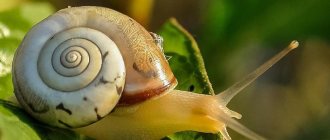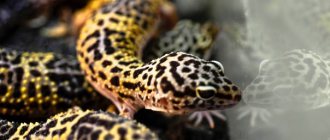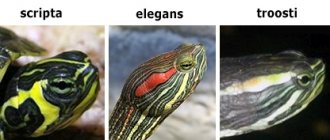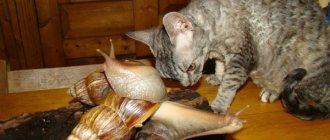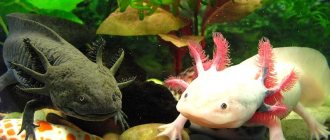Spiders 08/06/20206758 views
Rare in nature, but the most common tarantula in collections - all this is about Brachypelma albopilosum. This spider is simply an ideal choice for a beginner: calm disposition, low cost, unpretentious - what’s not an ideal spider?
Brachypelma albopilosum is native to Honduras and Costa Rica, where it lives in moist forests. Its color is black-brown, with fluffy pinkish-golden curly hairs. The average body size is about 6-7 cm, the paw span is about 17, rarely reaches 20 cm. The life expectancy of females is about 20 years.
Characteristics of Brachypelma albopilosum:
Adult size: The spider reaches up to 7 centimeters in body length and up to 16 centimeters in leg span, which gives it an impressive appearance.
Growth rate: Spiders of the genus Brachypelma and in particular Brachypelma albopilosum grow quite slowly, females reach sexual maturity by 2.5 years, males by about 1.5 years of life.
Lifespan: Females of Brachypelma albopilosum live up to 20 years.
Variety: All spiders of this genus belong to the terrestrial type of tarantulas; they prefer to hide in tree roots or other natural shelters, and can dig small holes.
Irritating hairs: Yes, the spider is not shy about using them, which can cause irritation where they come into contact with the skin.
Venom: The venom of this species is not dangerous and is comparable to that of a wasp.
Aggressiveness and danger: The spider is very calm, not fast, not nervous, not aggressive and not at all dangerous, Brachypelma albopilosum can be recommended as the first spider.
Behavior:
Brachypelma albopilosum is such a calm and melancholy spider that at first you wonder if it has died. Because of this, the spider is often called a felt boot. I have not found any data on an officially registered bite in captivity for several years, so the data on the toxicity of the venom are very contradictory. But, for the purpose of self-defense, the spider can shed protective hairs from its abdomen, which are dangerous if they come into contact with mucous membranes and eyes. On the skin they may cause only mild irritation. Rarely, that is, only in cases where a person has an allergy, can they be truly dangerous. Nevertheless, a spider of this species can show aggression, although very rarely. This can happen when the spiders are small or have been caught in the wild, but most often if they are a hybrid with B. vagans. This type of spider can be classified as a terrestrial species. It weaves little webs, only strengthening the soil, making a continuous, barely noticeable mat. If there is not enough space in the terrarium, the spider may begin to dig holes.
Brachypelma albopilosum (White-haired tarantula)
Keeping Brachypelma albopilosum at home:
As noted above, keeping Brachypelma albopilosum is not difficult, the conditions are the most standard. A spacious plastic container with a horizontal orientation can be chosen as a terrarium; a terrarium of 30x30x30 centimeters is suitable for an adult. coconut substrate may be ideal if you add more, the spider can dig small holes. Humidity for Brachypelma albopilosum is maintained at 70-80%, which is easily achieved by installing a drinker and watering half or 1/3 of the substrate; do not use a spray bottle; sudden changes in humidity are not desirable. Maintain the temperature in the range of 24-28 degrees Celsius. You can also install shelters in a terrarium with Brachypelma albopilosum, but this is not necessary.
Breeding:
The species is easy to breed, so this spider can be used to gain experience in breeding tarantulas. Males become sexually mature at the age of 1.5 years, females from 2 years. The female should be fattened before mating, as she may attack the male. For more successful mating, you should place the male with the female several times. After 5-9 weeks, the female weaves a cocoon, which can contain from 500 to more than 1000 eggs. After 5 weeks the first nymphs appear. Humidity should be around 80% and temperature about 25 degrees.
Kit for tarantula genus Brachypelma “Standard”
Author: Artem Zenkevich Editor: Tatyana Potapenko Source: [https://https://planetexotic.ru/]
| Brachypelma albopilosum | |
| Scientific name: | Brachypelma albopilosum |
| Subfamily: | Theraphosinae |
| First described: | Valerio, 1980 |
| Habitat: | Costa Rica |
| CHARACTERISTIC | |
| Type: | ground |
| Lifespan: | females 20 years old; males 3 |
| Growth rate: | low |
| Maximum dimensions: | Body 7-8cm, paw span 16-18cm. |
| Temperament: | calm |
| Irritating hairs: | Eat |
| Puberty: | Males 2.5-3 years, females 3-5 years |
| Difficulty of breeding: | easy |
| Toxicity: | low |
| CONTENT | |
| Temperature: | 18-33°C |
| Humidity: | 60-80% |
| Substrate: | From 2 cm |
| shelter | preferably |
| Terrarium type: | Horizontal |
| Terrarium dimensions: | horizontal20x20x20 cm |
| Feed: | Insects |
| Peculiarities: | Curly-haired spider |
| Content difficulty level: | Newbie |
General Description: An ideal spider for beginners, which was described in 1980. Its homeland can be considered Costa Rica and Honduras. They can be found in tropical rainforests. There they dig holes and hide under tree roots. He is also cutely called the “curly-haired tarantula spider.” It is this species that helps many amateurs begin their “spider” activities. This type helps them gain experience and move to the next level. Even if it is a somewhat unfortunate comparison, this spider is like your school, where you went to the first grade, as the first teacher, to forget whom, much less reward him with unflattering epithets, is at least not decent.
Appearance: Unlike other spiders of the genus Brachypelma, it is not brightly colored. But he is still special. It has long hairs, the color of which can range from black to white at the tips. And the main color is black or brown, and sometimes these two colors are mixed.
Dimensions: The body can be about 8 cm, but the size of the legs is 16 cm, sometimes even 18 cm. A rather large species that grows slowly and this does not suit some people.
Behavior: nice and calm spider, no one complained about their aggressiveness or nervousness. But he still needs to be careful and, if possible, combs out irritable hairs. Thus, he may even go bald, try to avoid this rather sad moment. Don't make him nervous. He is inactive and slow, sometimes he can sit in one place for days. Their bite is not dangerous. You can pick it up, but the pet may get very scared and drop its protective hairs.
Content: The content of this type will never cause you questions or problems. Conditions of detention are the same as for all spiders of the genus Brachypelma . but there are still some differences; Brachypelma albopilosum is very picky about humidity.
It is worth choosing a horizontal terrarium, measuring 20x20x20cm. with good ventilation. The substrate is at least 2 cm high, but preferably more. Also, if the substrate level is low, you need to purchase shelters. The substrate can be coconut soil. If you want to see this wonderful spider digging holes, then add at least 5 cm of substrate. The temperature in the terrarium should range from +18 to 33°C. High humidity will not hurt (60-80%). A drinking bowl must be a mandatory attribute. Don't forget to use clean and fresh water.
Spray the substrate, don’t forget. It is recommended to do this near the drinking bowl. Ventilation will help prevent the appearance of fungi and mold. And your spider will be in good conditions. After all, he doesn’t need as much as some people think.
Feeding: There will be no problems with feeding either. Insects of the appropriate size will do just fine. But if a spider is hungry, it can eat anything that is larger than it. Don't be alarmed by this. Feed babies 2-3 times every seven days, but for adults there is nothing new, once a week is enough. Good food would be crickets, bloodworms and cockroaches. It is necessary to carefully monitor that the tarantula does not starve or overeat.
Reproduction: Males reach sexual maturity at 2.5-3 years, and females at 3-5 years. If the spider is in the wild, then October-March is the mating season. And after about 3 months the female begins to weave a cocoon. It may even contain more than 1000 eggs.
Features: Its features include its curly hairs.
Advantages: — unpretentious in content;
- calm, not aggressive;
-females live long (about 20 years)
- very low price for them, accessible to everyone
Disadvantages: - there are irritable hairs
- slow growth rate
- leads a sedentary lifestyle
Conclusion: So we met another tarantula. Due to the great popularity of this type of tarantula, their cost is very low, which allows anyone to purchase it as their first tarantula.
Brachypelma albopilosum
Brachypelma albopilosum mating
Brachypelma albopilosum L1 in an incubator
Spider World
Habitat and appearance
This spider is also often called the curly-haired tarantula for its extravagant appearance. He is very popular because he is distinguished by his unpretentiousness and flexible, calm character. Perhaps the best choice for beginners. Its original habitat is the moist cloud forests of Honduras and Costa Rica. Spiders willingly use various natural voids in the ground, under logs and stones as their home, but they can also create shallow burrows in which they stay until dark, and only then go out to hunt. These spiders have excellent vision, allowing them to see even in the light of the stars. The main tones of this species are brown with a transition to black shades. The spider's body is covered with long curly pink hairs with golden tints, so it looks very beautiful and unusual.
Maintenance and care
You must choose a standard aviary. A cube with an edge of 30 cm is suitable. You need to add about 7 cm of substrate, which will be enough. It is best to mix vermiculite and coconut fiber. For this type of spider, a drinking bowl is required, in which you need to change the water every day if possible. A fluorescent lamp is suitable for lighting this spider, and it should not be exposed to sunlight. The optimal temperature is from 22 to 28 degrees, so in most apartments it will feel good even without heating. Humidity needs to be quite high - up to 80%. Natural cover is desirable, but not necessary. Hence another advantage of this spider - it is in sight all the time. The lifespan of females reaches 20 years. The substrate must be periodically sprayed to provide surface moisture.
The housing terrarium must be horizontal, measuring at least 30x30x30 cm for one adult spider.
At least 5 cm of substrate should be poured onto the bottom. You can use peat, vermiculite or coconut substrate.
Reproduction
Typically, mating of these spiders begins in early October, and can last until the end of our spring. The female weaves a cocoon after 10 weeks, into which she lays up to 1000 eggs, and the larvae will emerge in about a month and a half. When mating, spiders are not aggressive, they simply may not show interest in each other.
Feeding
Any insect of suitable size will do for the spider. The feeding schedule is standard - young spiders are fed twice a week, and adults - once a week.
Peculiarities
We repeat that it is ideal for a beginner. It is inexpensive and quite easy to maintain. Therefore, if there is no experience, then this is the best spider to learn, because it can forgive small mistakes in content. The spider is practically non-aggressive, and its bite is safe for humans in the absence of allergies.
Brachypelma albopilosum. Maintenance at home.
In this article I will tell you about the tarantula Brachypelma albopilosum or as it is also called the Curly-haired tarantula. You will learn the characteristics of this species, how to keep it at home, how to set up a terrarium for it and how to feed it.
The tarantula Brachypelma albopilosum can rightfully be considered one of the best tarantula species for a beginner. This spider is also great as a first tarantula. It is distinguished by a relatively calm disposition, inexpensive cost and unpretentiousness in maintenance. According to general information, this type of tarantula is considered the most peaceful, but there are exceptions that can be aggressive.
This species does not have toxic poison and its bite does not pose a serious threat to humans. Instead of toxic poison, nature gave this species of tarantula another means of self-defense - irritating hairs. Brachypelma albopilosum is not as nervous a spider as its fellows, but if threatened, it will not hesitate to use its irritating hairs. If the spider begins to scratch them, you must immediately remove your hands and face. Under no circumstances should irritating hairs be allowed to get into the eyes or mucous membranes.
This species of tarantula is distinguished by its high growth rate compared to its counterparts and the presence of thick hairs that give it a ruffled appearance. Thanks to these hairs, he received the nickname Curly Tarantula. Brachypelma albopilosum is a very sedentary and slow-moving tarantula as an adult. Young tarantulas run very fast and can run out when you open the lid.
Keeping this type of tarantula is very easy. For an adult spider you will need a horizontal terrarium measuring 40x40x30 centimeters. The height can be taken smaller, but it is advisable to take the same bottom area. If there is a sufficient layer of substrate, these tarantulas dig burrows. It is recommended to sprinkle about 5 centimeters of coconut shavings on the bottom of the terrarium. If you want, you can put up a shelter. My tarantula really likes to sit on half a coconut and only comes out at night or if crickets are jumping around the terrarium.
The temperature in the terrarium must be maintained at 24-28 degrees, humidity should be at 70 percent. I recommend spraying not the entire substrate, but a maximum of 1/3. Preferably only a place near the drinking bowl. This is done to prevent fungi and bacteria from multiplying in the terrarium. If you see that mold has started to grow, then you urgently need to reduce the humidity and replace that part of the substrate. Also, there should always be a drinking bowl with clean water in the terrarium.
For intensive growth, young tarantulas must be fed once every 2-3 days with a small cricket, juvenile marbled cockroach, small mealworm or bloodworm. If the food insect is too large, it can be cut in half or immobilized so that the spider is not afraid of it. Adult tarantulas need to be fed a large marbled cockroach, three crickets, a locust, or a newborn mouse once a week. It is necessary to ensure that your tarantula does not overeat, otherwise it may develop a hernia. But at the same time, the abdomen should not be allowed to be very small.
If you have no experience with tarantula spiders and want a calm, peaceful and unpretentious spider, then Brachypelma albopilosum will suit you very well.
If you liked the article, share the link with your friends!



